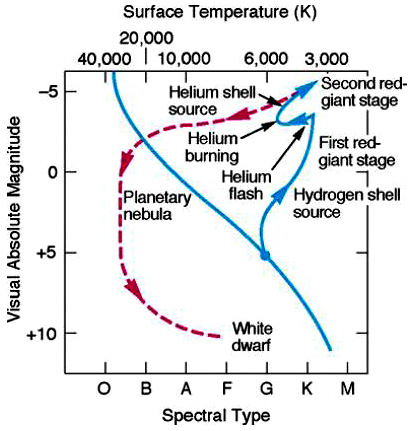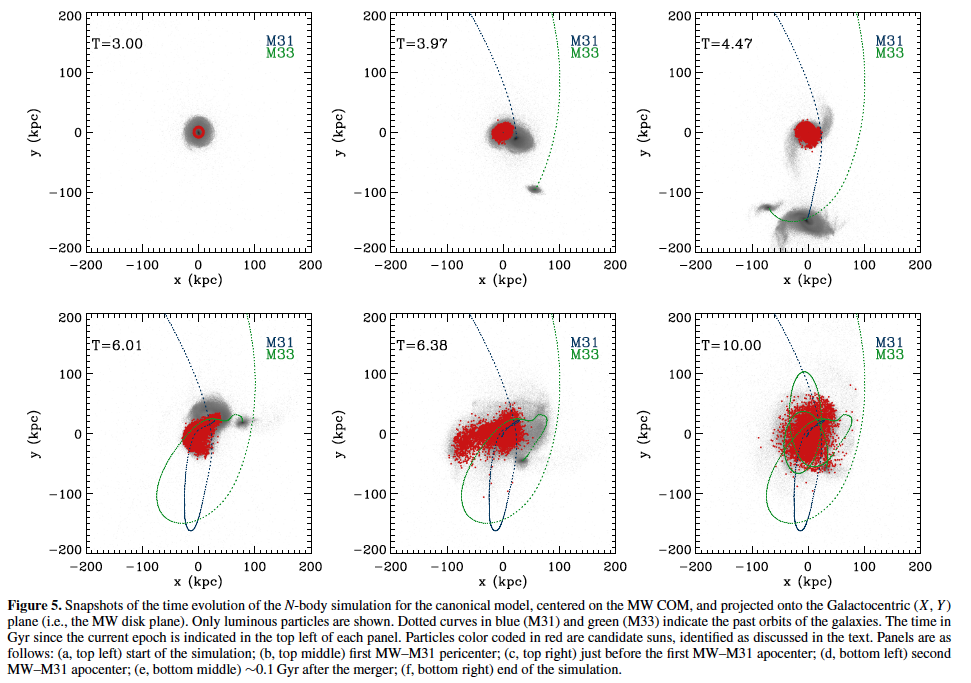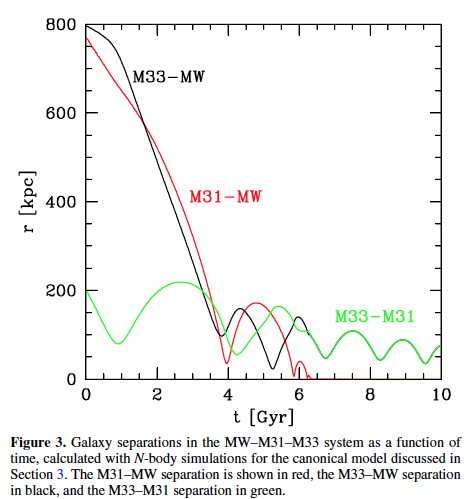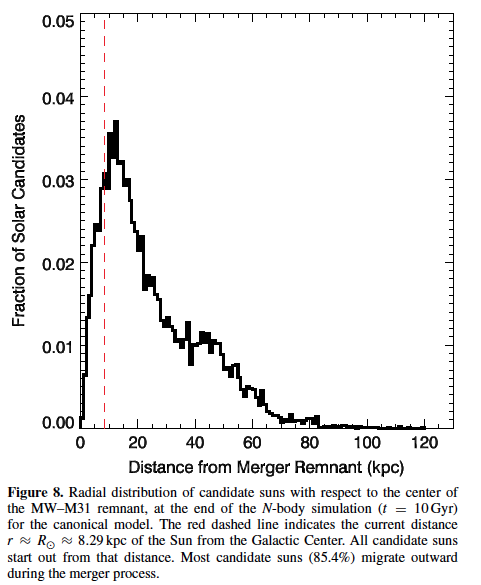+1 Gyr: Evolution of the sun makes Earth inhospitable for life

Equilibrium temperature of a planet scales as the temperature of the star, so as the Sun becomes more luminous and hotter, the Earth warms up as well:

We will need to move away to the outer solar system.
+ 4-6 Gyr: Milky Way and Andromeda collide and merge
The 3D motion of Andromeda is still not well-known, but most recent estimates say first collision in ~4 Gyr (~ 30kpc impact), followed by a merger at about 6 Gyr. Example (figures from van der Marel+ 2012):

 |  |
But what will it look like?
+5 Gyr: Sun evolves through red giant phase, becomes a white dwarf

Need to have colonized other stars by then!
+10-50 Gyr: Galaxies run out of hydrogen gas, star formation shuts down:
Depletion time = Mgas/SFR
For a galaxy like the Milky Way, Mgas ~ 5x109 Msun, SFR ~ 1 Msun/yr, depletion time ~ 5 Gyr.
Why is this a low estimate? What could increase this number?
+ 50-100 Gyr: Galaxy groups and clusters merge to form the most massive galaxies
+ trillion (1012) years: lowest mass stars (~0.08 Msun) die out
At this point, all that is left are dark remnants:
- Brown dwarfs
- White dwarfs
- Neutron stars
- Black holes

Now what?